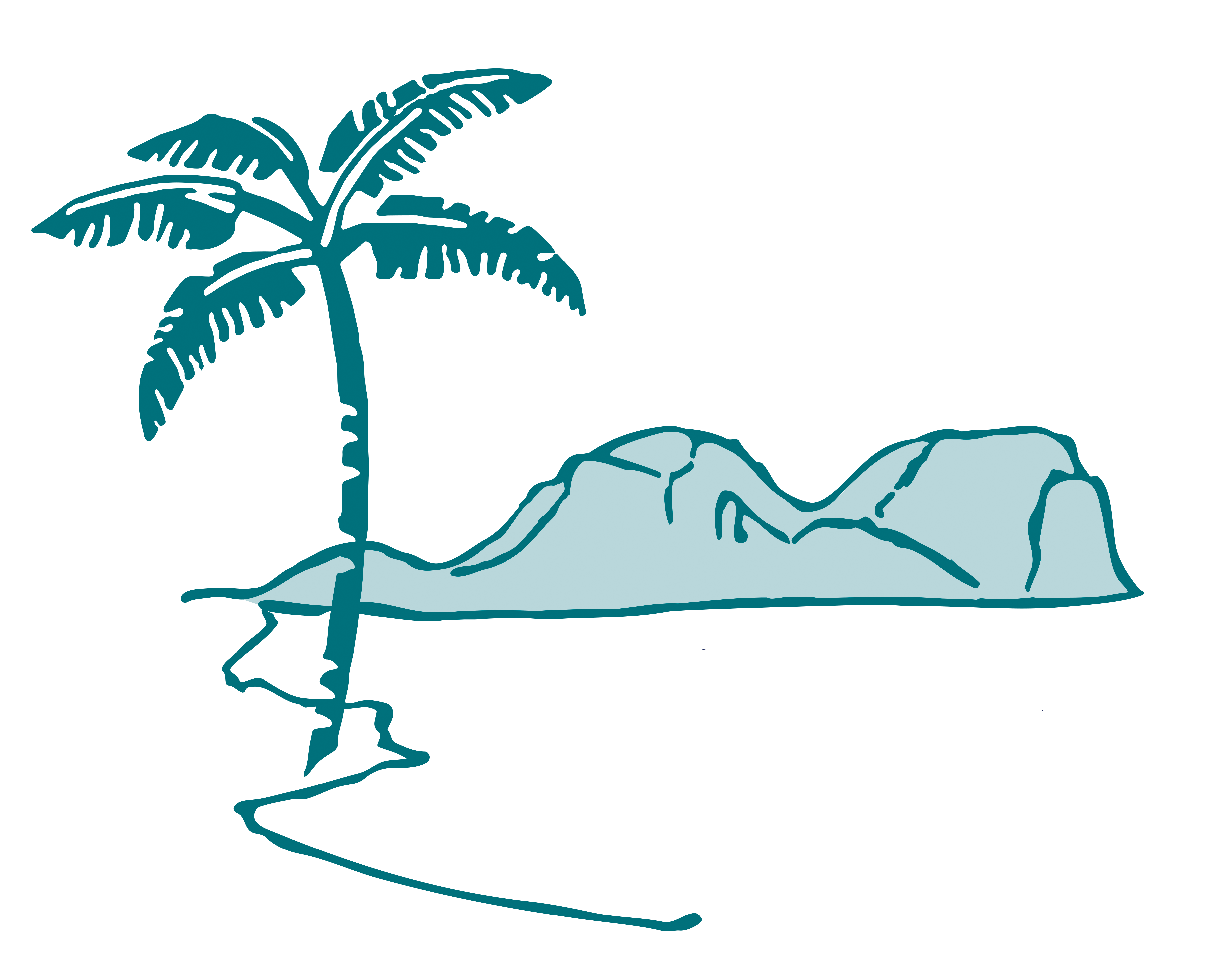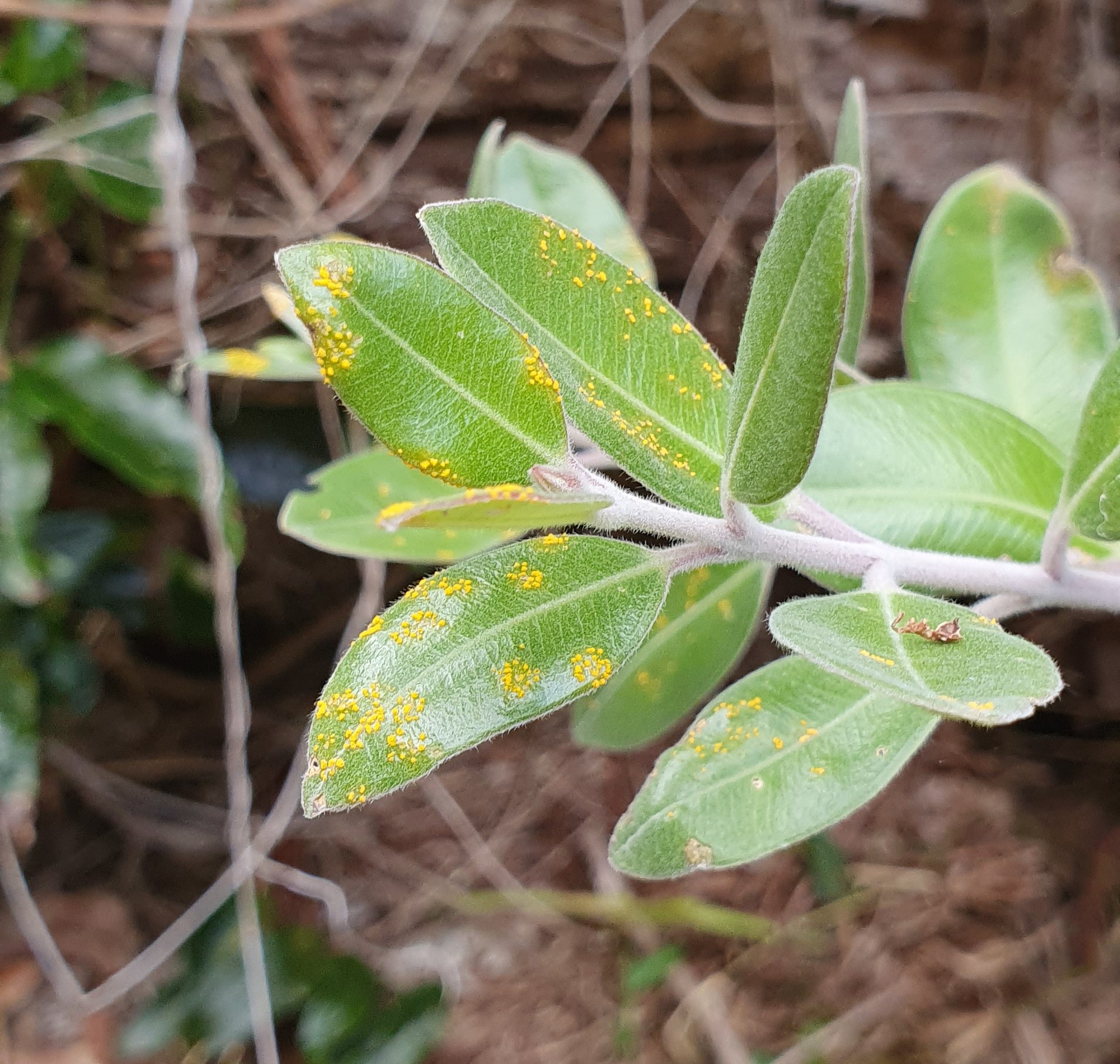Scheduled fungicide treatment on Friday 10 March
Treatment is ongoing at active myrtle rust infected sites, with preventative spraying currently taking place in surrounding areas.
Preventative treatment is scheduled on Friday, 10 March in both the north and south of the settlement:
- Golf Course, with Triadimenol, between 5:30 am and 7:00 am
- Kings Beach foreshore area south of Capella Lodge. With Triadimenol, between 7:00 am and 9:00 am
- Blue Peters, Lagoon Rd, with Triadimenol, between 3:00 pm and 5:00 pm, will require limited road closure for a portion of this time
- Opposite LHI Central School and near the Preschool, with Triadimenol, between
4:00 pm and 5:00 pm
As active myrtle rust spores have been identified in the settlement (see map), and to help contain the spread, the Board encourages you to limit your access to areas around infected sites and the Permanent Park Preserve and walking tracks across the island.
Why are we trying to control the myrtle rust?
Myrtle rust poses a significant threat to LHI’s unique plants and World Heritage values. Spread can occur rapidly, and spores can travel very long distances, infecting susceptible plants many kilometres away from the initial site of infection.
What chemicals are contained in the myrtle rust treatments?
To treat myrtle rust, a combination of fungicides have been applied in targeted areas, in line with the label and approved concentrations for the treatment of myrtle rust.
Three treatments with different types of fungicide were required to ensure that all active spores were eliminated and that the infection did not become resistant to active ingredients in the fungicides.
These fungicides include:
Location | Fungicide |
Myrtle rust infected plants and Myrtacea species on infected properties | First treatment- Azoxystrobin |
Second treatment- Triadimenol | |
Third treatment- Trifloxystrobin and Tebuconazole | |
Neighbouring properties and along Lagoon Road | Single preventative treatment- Triadimenol |
In the coming weeks, a final ground spray of dead foliage from the myrtle rust infected plants will take place before the next stage of treatment occurs (solarisation).
Why are PPE suits worn when applying the fungicides?
The strict use of PPE (Personal Protection Equipment) is widely recommended by health professionals to minimise the safety risk involved when handling or applying fungicides and other chemicals. To protect the health of LHIB staff while handling the fungicides, PPE has been worn in line with best practice and label instructions.
As the teams treating infected sites are moving around underneath vegetation and potentially disturbing spores, wearing PPE is an important hygiene protocol to help limit the spread of the fungus, which can easily be picked up on clothing, hair, and other materials.
The PPE is removed and bagged before leaving each treatment site to contain any myrtle rust spores.
What about risks for the wider community?
The safety of the community is of utmost importance while planning the myrtle rust eradication response. Areas where myrtle rust has been detected and fungicide has been applied have been taped off and public access to the area has been managed.
Some areas adjacent to infected sites have been treated with a preventative treatment as a precautionary measure. These areas have been identified with signage at least 24 hours prior to and post spraying.
The LHIB has attempted to minimise impacts on the community by working closely with leaseholders, treating areas before dawn, working to low-wind weather windows and establishing traffic control and spotters while treatment is in progress.
All fungicides have been approved by the Australian Pesticides and Veterinary Medicines Authority for the treatment of myrtle rust, and have been applied as per their label instructions. The fungicide is rapidly absorbed by the plant and is safe to walk around once it has dried.
These fungicides are readily available to purchase by the general public from retail stores and are also used to treat mildew and other rusts in edible crops.
Why is the application of fungicides necessary?
Myrtle rust poses a significant threat to key island flora and endangered species. By responding quickly and safely, the Board aims to protect paradise for the whole community.
It is imperative that myrtle rust control measures take place, with fungicide being an effective way to minimise the spread of spores before the plant is removed and destroyed.
What else is being considered to minimise safety issues?
The treatment of infected plants and adjacent myrtaceous species over the past few weeks has been consistent with the advice of Australia’s leading experts on myrtle rust.
Public notifications and signage were deployed in accordance with the Pesticides Act 1999 and the LHIB Pesticide Use Notification Plan, with 24-hours’ notice provided before the commencement of treatments. The signage will always identify the type of fungicide in use at the treatment site.
For future treatments, and where practical to do so, the LHIB will set up further signage, alerting the community to fungicide applications. Treated sections of public land will also be closed off entirely before treatment begins and for a minimum of 24-hours after treatment.
The LHIB staff have been working tirelessly to control this threat and are committed to safeguarding biodiversity on the island.
I would like to thank the community for all the assistance and support provided in these endeavours.
Yours Sincerely,
Debbie Johnsen
CHIEF EXECUTIVE OFFICER (ACTING)
Date: 07 March 2023

